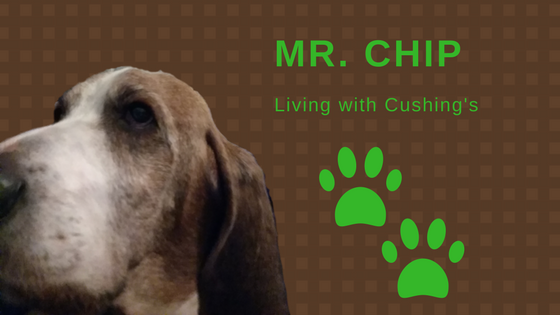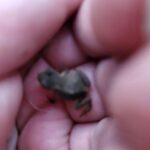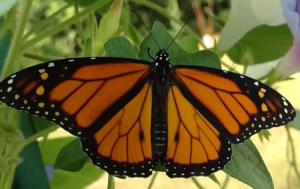I never update my blog anymore. I think that’s what blogs are for, neglecting. Anyways, realized that I hadn’t updated ANY of this and at some time in my future, I’ll want to remember all of this and perhaps it will be helpful to others who get a diagnosis of Cushing’s Disease, or hyperadrenocorticism, in their dog. We went through a lot with our beautiful basset hound, Mr. Chip to figure this out and if we can spare anyone else all the trouble, we’d love to.
After Chip kept getting urinary tract infections last spring, we ended up doing more testing and figuring out that he has Cushing’s disease. He has a tumor on his pituitary gland in his brain and that overstimulates his adrenal gland to produce an excess of cortisol.
Once our vet figured out what the problem was we started working on managing it. In dogs, they do not do surgery to remove the tumors. It’s more of managing the disease. So, the way we ended up treating this for Mr. Chip was to administer a drug, Lysodren. This drug destroys part of his adrenal glad, therefore preventing him from producing an excess of cortisol. However, the trick is to balance it. He needs to have some cortisol, that’s the stress hormone that helps the body with fight or flight response. Cortisol is meant to be released only occasional and in short spurts. It causes the liver to release glucose and it also helps the body’s immune system.
So, you do this initial loading phase of the Lysodren where you try to get to the exact right spot, that took us 2 tries and one emergency dose of prednisone (which you give to stimulate the adrenal gland if you’ve destroyed too much). During that phase, just plan on being with your dog all the time and observing them. It’s a lot of watching for symptoms to disappear. For us, it was the water consumption and frequency of urination that gave us the biggest clues. His activity level has always been low, so we couldn’t tell from that.
Once we got to the right spot, we went into our vet for a test just to see where things were at, and yay, we were looking good. After that, it was just a little more work perfecting the maintenance dosing.
We got diagnosed with the Cushing’s in June but it took us until August or so to really get the dosing down. Keep a journal of times they drink and urinate if you have a hard time figuring it out. We are lucky in that somebody is with Chip most of the hours of the day.
So, he’s been on the same maintenance dose since August and generally has been doing well.
A few tips for someone else who might go through this:
- Check the prices of Lysodren. We found that it was $40 less a month getting it at a human pharmacy than at the vet. The vet checked and there was no way they could match that pricing. On the maintenance dose we settled at (Chip weighs about 55 pounds), we spend about $60 a month.
- Chip just always drinks tons of water. We don’t limit water because for the most part someone is here to let him out every 4 – 6 hours max. His limit is about 6 hours for how long he can hold it.
- Because of the frequent drinking and he was already a messy drinker and he has tons of loose skin, we are battling a skin infection around his mouth that we just can’t seem to knock. It’s always wet there no matter what we do. He’ll lick any kind of topical cream off. He can’t get any kind of steroid treatment anymore for things like that. So, that’s been tough. Be watchful for that if they are drinking a lot of water. With a bit less loose folded skin maybe it wouldn’t be such a big deal though.
- We’ve found that being really consistent with the dosing has been of key importance. Even switching one of the doses between breakfast and dinner can cause him to have accidents. However, you have to also be flexible, our vet warned us that the dosing may change over time and we have to be ready to roll with it.
If you are living with Cushing’s what tips do you have for us? We are all muddling through this together and I’d love to hear your experiences!





